Chapter 4: The Giant Monkey of Wutong Shan---梧桐山的巨大的猴子
10,000 Years of Strangeness: A Paranormal Primer for Ancient and Modern China
Part I: The Author's Own True Tales
Chapter 4: The Giant Monkey of Wutong Shan---梧桐山的巨大的猴子
Chapter 4: The Giant Monkey of Wutong Shan---梧桐山的巨大的猴子
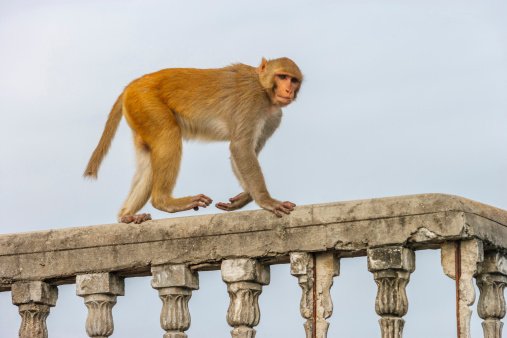
Previous Chapters 前章: Pt. 1 Chapter 1, Chapter 2, Chapter 3
As mentioned in a previous chapter, it was my custom to go out for bike rides early in the morning when I lived at the Youth College. I’d usually be out of the house by 6:00, sometimes earlier. My usual ride was to do hill work in Yin Hu (银湖), or Silver Lake in English. Yin Hu seemed to be an early posh neighborhood in Shenzhen situated on a hill behind Yin Hu bus station, which was anything but posh. It was one of the long distance bus stations serving Shenzhen. I used to get the overnight bus to Yangshuo there.
These overnight buses are like nothing I’ve ever seen in America. In the US, if some place is too far to drive, you fly. But in China, you take an overnight bus, or at least back then you did. These buses were fitted out with bunk beds their entire length. You’d buy a berth, and then lay in it until you got to your destination. The things were freezing inside, but they gave you a warm blanket. They showed movies off of bootlegged VCDs, usually old American or Hong Kong movies, until about 10 O’clock, then it was lights out. They also had low-budget sleeper buses that weren’t air-conditioned and came without blankets. The windows stayed open and passengers smoked profusely.
Bus stations in China are like bus stations in America—plenty of unsavory characters around. But since buses are used widely to access small cities and towns that aren’t served by trains or air, there’s always an interesting mix of travelers. Some even appear fairly well-off. My guess is they never learned to drive, and that’s why they take buses back their hometowns. Bus travel doesn’t come with the same stigma it does in North America of being only for paupers and psychopaths. In China, everyone rides the bus.
So up behind this bus station was Silver Lake, a development of single family homes called villas in China. To most Americans (and Canadians too), a villa is a kind of ski lodge found in the mountains of Switzerland or Italy, whereas the house you live in is called a “house” or single-family home by real estate agents. They might be a specific kind of house like a colonial or a Cape Cod or a ranch, but never villas.
As you turn off the freeway and into Silver Lake, you pass the bus station on your right and then begin to climb. You pass through an area that doesn’t look or feel at all like it’s in China. The villas are off to the right in a gated community with a reservoir and a school and some other stuff over on the left and it has the look and feel of a mix between Northern Virginia and Southern California. In fact, as I’m recalling it in my mind’s eye, it reminds me a lot of Bakersfield, CA, a sterile but attractive suburban Hell that, through its dark magic, arouses an ironic nostalgia.
The tree-lined boulevard narrows to two lanes and takes you into Silver Lake Park. You can either cross the reservoir and stay on flat ground, or you can continue up onto the hill. You had to get there early to avoid the fee. I think if you got through the gate before 7:00 a.m., they let you in for free, so that was one of the reasons I liked to get up early. I couldn’t see paying 5 yuan every time I wanted to work out. That and the superior early morning air quality of pre-emissions control Shenzhen.
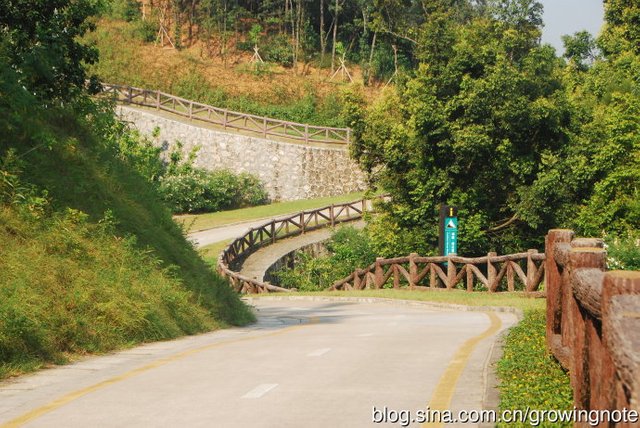
It wasn’t a big hill; the road to the top was probably about a mile and half, though honestly I never measured it. The road was immediately steep as you passed through the entrance gate. For some reason, so many places in Shenzhen are like this: as soon as you enter, you start to climb—Fairy Lake is like this, and so is Nanshan Mountain. I’d stand up on the pedals, power myself to the top as fast as I could, then coast down and repeat. There was always a group of the same four MILFs that would cheer me on and flash flirtatious sparkling eyes at me. They tried to flag me down a couple of times, but treacherous, horny married women are best left alone in my book.
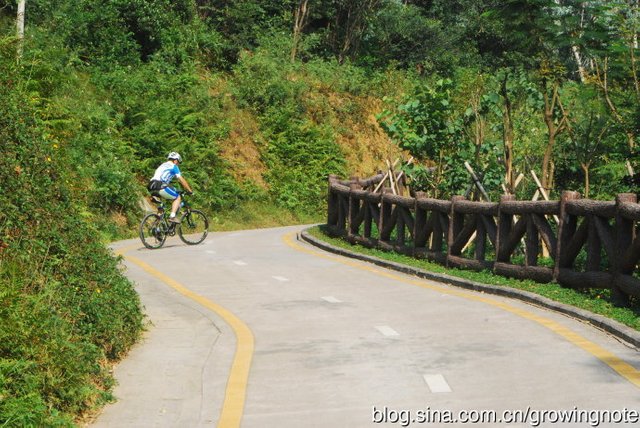
After I was feeling strong enough from these workouts on Silver Lake Hill, I decided it was time to try Wutong Shan. Wutong Shan (梧桐山), or Mount Wutong, is the highest peak in Shenzhen and the centerpiece of Mount Wutong scenic area which is a 12 ¼ square mile urban wilderness on the border of Luohu and Yantian Districts. The surrounding forest is vast enough that hikers do occasionally get lost and perish on the trails. The mountain is 3100 feet high (944 米,and begins at sea level!) and 4.1 miles (6.6公里) of unrelenting 13 percent grade paved road. It never levels out the entire way up, there is no opportunity to coast, you just have to keep pedaling till you get there.
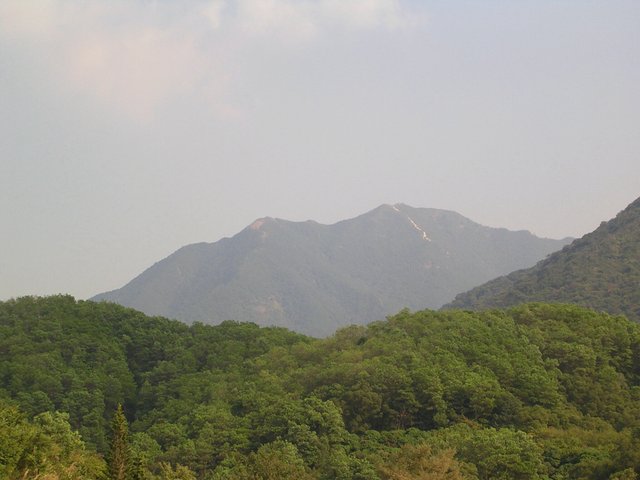
In addition to this, it’s 12 (20公里) miles from home just to get there, much of it along Nigang Expressway and it’s complicated interchanges and insane service roads. If you can get through all that, you come out on Aiguo Rd (fun fact: Aiguo translates as “Love Land”) in a rural oasis that goes by Donghu (or East Lake) Park, roadside restaurants and nurseries, a hillside development that reminds me of Mohican Hills in Bethesda, MD, and a broad reservoir. Honestly, it’s like entering a portal into another world reminiscent of rides through the country at home.
Aiguo Road is narrow and busy. If you’re not completely and ceaselessly aware and attentive at every single moment, you could very easily get run into a concrete drainage ditch. Drivers on this road are fast and unmerciful. As I got better at the ride, it became easier to take in the scenery. Just beyond the drainage ditch was a chain-link fence topped by barbed wire to keep people out of the reservoir. There was a strip of dense brush and trees buffering the reservoir from the road. One day while riding out to Wutong Shan, I saw a guy hauling a huge bundle of weed (as in marijuana, 大麻) on his shoulder, drop it along the fence line with a few other bundles, and then trudge off presumably to get more. I didn’t stick around to find out what that was about but the leaves and the intoxicating odor gave it away. Turning right past the reservoir takes you into a sleepy and deserted banana growing zone.
I’d been doing this climb up Wutong for some time now. On my first try I only got about half way up. A spring comes out of the mountain there and you can drink all you want and refill your water bottles. One time I remember this old guy on a mountain bike with work boots on zooming up the mountain ahead of me. Every once in a while he’d coast down and talk to me for a minute or two in pretty good English (he was from Hong Kong he said), and then zoom ahead again. He told me he biked the whole mountain twice a day every day since he retired and moved to Shenzhen. But I never saw him there again after that.
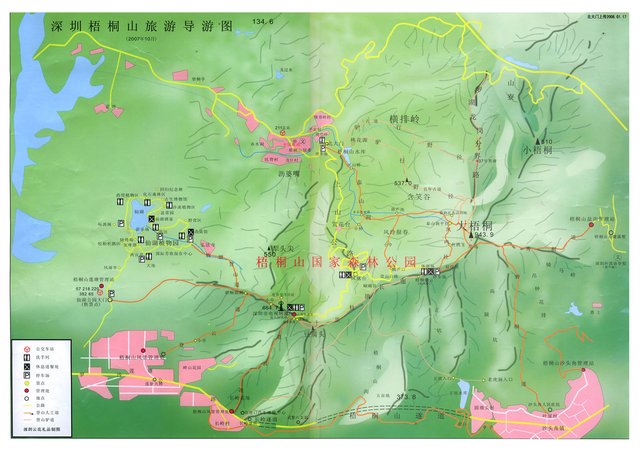
Finally, after doing this 24-mile round trip plus the climb up the mountain, I was finally able to do it in one hour exactly, averaging 4.1 miles per hour, on the smallest chain ring of a triple and biggest cassette wheel, which was a 32 if memory serves. Eventually I was able to do it on a double and the next biggest cassette which I think was a 23.
Now I’d been up and down the mountain several times. I’d hiked it once or twice with friends, took a date there one time, and been riding it once or twice a week. I was no stranger there, and I always knew where I was on the mountain and what scenery was around the next bend. I knew the changes in the grade on the way up and knew where I could relax in the less-steep sections (might have been as little as 9 or 10% in a couple of sections) and where I would really have to power the cranks.
It was a morning like so many other mornings when I left at the crack of dawn. As I approached the youth college gate on my bike, I saw Stan just coming home from a night out with a gang of friends, none of which I recognized. I rode out to the mountain in the fresh, crisp morning with barely a vehicle on Nigang Expressway or its insane service roads.
I think it was about 6:30 or so if I am visualizing my bike computer accurately. I eventually mounted a wireless bike computer for these trips, which is how I finally clocked and measured everything.
It was in the rosy pink light of early morning. The sun was just up and a light ring of broken mist around the mountain tarried in the warming light of dawn. I was about a quarter of the way up the mountain in almost exactly the same spot where years later I would see my first scarlet-backed flowerpecker (朱背啄花鸟). Up the slope to the right was thick secondary brush with a few emergent trees. To the left going down the mountain was thinned brush near the road that merged into dense forest. The trees were far enough down the steep slope that the tops of the closest ones were just barely higher than the road deck.
I came around a bend in the road, and then, not 30 feet in front of me, a giant monkey trotted lazily out of the brush, across the road and down into the forest. When I say giant monkey, I mean a monkey as big as me, six feet even and 175 pounds (1.83 米, 80 公斤).
I stopped the bike, put my feet down and watched it disappear as it scampered across the road and down into the forest.
Then I waited for more. Monkeys in China are never alone. I waited maybe half a minute but no more came. I crept forward on my bike, walking it with feet still on the ground, to the spot where it had emerged, and scrutinized the brush. No movement. No sound. Nothing. I swung around to the opposite side of the road and scanned where it had entered the vegetation. Nothing.
It was clearly a rhesus macaque. Same color, same bouncy gate, same tail. Only this one was HUGE. Macaques average less than two feet in length on all fours, not counting the tail. This one was three times that size. Admittedly it didn’t stand upright. But I estimate it would’ve been about head to head with me if it did!
It wasn’t “just a big dog”. Dogs’ legs bend backwards because they walk on their toes, and their ankles are where their knees should be. A monkey walks on its heels like we do, so their knees bend forward. This heel walking causes their rumps to bounce in the air when they trot, unlike the smooth gate of a dog or other toe-walking quadruped. The critter I saw was clearly a heel walker with its knees bent forward. It had a monkey’s face for crissakes. And hands.
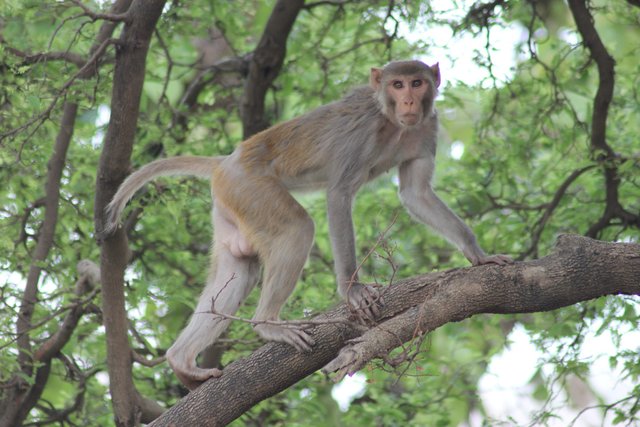
I spent a few more seconds looking around and listening in, but detected nothing but bulbuls, great tits, tailor birds, the chortles of some masked laughing thrushes and the deep mysterious whoops of a coucal. All baseline sounds of a Guangdong forest.
I shrugged my shoulders and finished my climb. Racing down the mountain on the return trip at 50 miles an hour, I slowed and stopped again when I arrived back at that spot. Again I listened and looked, but saw and heard only the usual birds.
I went back to that spot several times after that, timing my ride to get there at about the same time each trip. If it were a creature of habit, it would follow the same routes at about the same times of day. But I never saw it again. Where it came from, where it was going or how it got so big I’ll never know.
It did get me to thinking though. It got me to recall a memory of another run-in I had with a mysterious primate. I was four or five years old at the time. The DeMarco sisters were visiting from Perth Amboy and had brought my cousins Tony and Marianna with them.
Tony was my favorite. I loved all the DeMarcos. Like most Italian families, the DeMarcos were big, noisy and full of love. But Tony was a masterful story teller, and though he was a teenager, he was never embarrassed to be seen or play with a four-year-old. He was also cool. When I was nine and after we’d moved to Maryland, he introduced me to Playboy, via my own father’s collection.
At the time I was four or five, we still lived in Fairlington, which has since been yuppified into “Fairlington Village,” a red brick development that reproduced the red brick colonial style that is so popular in the original colonies of the South. It was built during the war years to house the burgeoning staff of the Pentagon, which was just up the road. It. Or so I’ve been told.
Fairlington was a brilliant place to spend your early childhood. It was a seemingly endless maze of duplexes and small apartment buildings in matching architecture. It was a storybook land of Georgian style houses with real slate rooves surrounded by big old elms and oaks. There were no fences. Everyone’s backyard was everyone else’s backyard. The duplex townhouses were situated in a horseshoe around parking lots. As kids we referred to these as courts for some reason. Maybe the adults told us they were or maybe we just used that word because some of them had tennis courts. I don’t know. Each court was named after some kid or kids who lived there. We lived in a court named after my sister and I. Most of our friends lived over in Kim’s court. Further down was Suzy’s court where a cute blonde from Kansas named Suzy lived.
In addition to forming horseshoes around the parking lots, the back side of each of these courts formed another courtyard which was like a communal backyard where more often than not spontaneous neighborhood cookouts and parties formed. One side of our court, the front side of Kim’s court, and one side of Joey’s court all formed a three-sided courtyard with the fourth side being open to a large common that to a four-year-old, went on forever like the endless plains of the West. Our back door opened onto that common. It’s where I learned to play catch with my dad and where we found out our Dalmatian was deaf when she ran off and didn’t respond to our calls.
The various units in each court also had connecting basements. You could go down your own basement, wend your way to the end of it, and there’d be a door that opened into a laundry room that everyone shared. Our basement alone seemed bigger than the house, but then when you add that common area, it became a regular subterranean land of adventure. These laundry rooms were also accessible from outside doors that were never locked, making everyone’s laundry room accessible to everyone else. Thus, many a day was spent “exploring.”
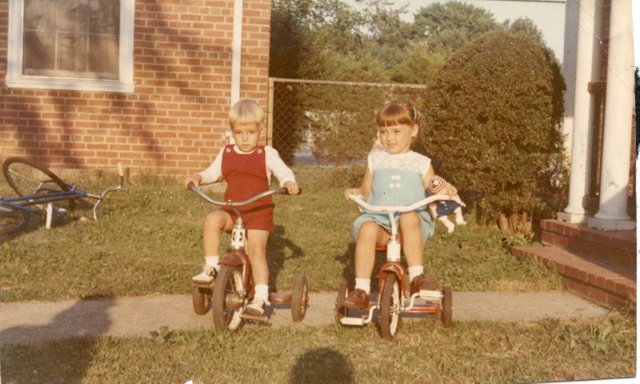
I could go on and on because I loved that place so much and it was so perfect for the curious life of a child, but I’ve already digressed enough I think.
Let’s get back to that summer day with the DeMarco sisters and Tony and Marianna. Tony and I went out for a walk around sunset. It wasn’t completely dark yet. It was that gradually dimming light just after the sun goes down but before the stars come up. It was a classic Southern summer evening. We went out the front door and walked to the right over to the end of our row of duplexes. We turned right again to go through the gap between our row and the next and into the large back common area to maybe walk the length of it, turn around and come back. Whereas my sister and I had explored the north end of it rather thoroughly, we rarely went south for some reason.
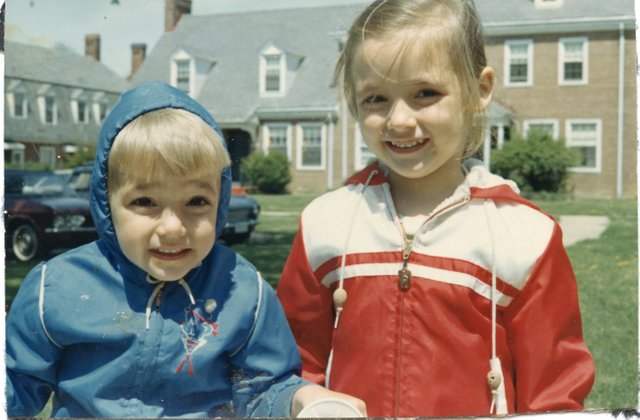
As Tony and I came through the gap and emerged on the edge of the common, we saw standing in the middle of that extensive green lawn, some kind of white, luminescent gorilla-like thing.
I looked at Tony. He looked at me.
“Do you see that?” I asked him.
“I do,” he answered. “What is it?”
“It looks like a gorilla, but it’s white.”
At that point it seemed like whatever the thing was, it saw us. No one else was around. It was just after dinner time and people were probably getting ready to zone out in front of their TVs, which my family didn’t do much. In fact we kept the TV in the basement, not even in the living room as most families did. There are very few things I can ever remember watching at night: The moon landing, the occasional classic horror movie, the Wizard of Oz, and Walt Disney and Wild Kingdom on Sunday nights. Later on I think we watched the Brady Bunch and Daniel Boone. In any case, if there was any daylight, we were outside.
Whatever the reason, Tony and I seemed to be the only two people out for a stroll that evening. The ape-like creature was clearly visible standing the midst of this big field of grass. It stood on two feet, had short legs, a broad trunk and long arms that hung out to the sides curved at the elbows. The face wasn’t clear. But we could tell from the body language that it spied us, and it sidled behind a tree that had been planted in the lawn. The only problem was, the trunk wasn’t wide enough to conceal it, so it’s curved hanging arms protruded from either side and it was still clearly visible for that reason.
“Look!” I exclaimed. “It went behind that tree!”
“Let’s go see what it is!” Tony grabbed my hand and we ran to the tree.
When we got there the thing was gone. We looked up, but it hadn’t climbed the tree. It was nowhere to be seen.
We went home and told the family about it. Whether they believed us or not, they indulged us as if they did.
I never saw that thing again. I still have no idea what it was or if anyone else ever saw it. It had appeared and disappeared as suddenly, strangely and mysteriously as the giant monkey of Wutong Shan.
Great Story! That was my first time seeing a scarlet-backed flowerpecker (朱背啄花鸟) as well . There was a another flower pecker in OCT 华侨城。 I can not remember which one that was.
Wutong is big and the different sides have different features. I bet that monkey was a captive before and got so big. Four years ago walking in OCT and the same type of monkey ,rhesus macaque, was just sitting on the sidewalk. He was sitting and he was about to mid-thigh ( I am 5'10) I saw him and he saw that I saw him... and started walking toward me. I could see he was a previous street animal from someone because his wrist hair was worn where shackles use to be.
Once I saw him take interest in me, I darted the other way. They got some nasty teeth, I did not want to be the first foreigner in Shenzhen city to be attacked by a rhesus macaque.
8-12 years ago these "performance" monkeys would be in Louhu tied with a rope or some cruel shit. People would gather around and then a collector would come around to get payment to see the monkey. It was a hustle game , usually involving intimation. Also a great opportunity for pickpockets.
Those were the cowboy days, I do not see that anymore around here. Yet, when i travel to a 2nd tier city you can still see that type of thing.
Keep on Keepin on
Yep, saw it Kaiping last time. Disgustingly cruel treatment of the monkeys. I think the locals even there were sick of it since no one was giving any money and aside from a few onlookers, there really wasn't any kind of a crowd gathering. To keep a rescue monkey as a pet would be really hard too because they're so smart. You'd have to be on guard constantly and never leave them alone in the house unwatched.
I still miss those cowboy days sometimes....more sense of adventure back then.
Beautiful pictures and interesting story. Thanks
You betcha. And thanks for the kind remarks. You might enjoy the previous chapters as well.
Summary by @tldr:
10,000 Years of Strangeness: A Paranormal Primer for Ancient and Modern China Part I: The Author's Own True Tales Chapter 4: The Giant Monkey of Wutong Shan---Wu Tong Shan De Ju Da De Hou Zi
But since buses are used widely to access small cities and towns that aren't served by trains or air, there's always an interesting mix of travelers.
To most Americans (and Canadians too), a villa is a kind of ski lodge found in the mountains of Switzerland or Italy, whereas the house you live in is called a "house" or single-family home by real estate agents.
The villas are off to the right in a gated community with a reservoir and a school and some other stuff over on the left and it has the look and feel of a mix between Northern Virginia and Southern California.
In fact, as I'm recalling it in my mind's eye, it reminds me a lot of Bakersfield, CA, a sterile but attractive suburban Hell that, through its dark magic, arouses an ironic nostalgia.
I spent a few more seconds looking around and listening in, but detected nothing but bulbuls, great tits, tailor birds, the chortles of some masked laughing thrushes and the deep mysterious whoops of a coucal.
As Tony and I came through the gap and emerged on the edge of the common, we saw standing in the middle of that extensive green lawn, some kind of white, luminescent gorilla-like thing.
stats: 7.0% of original contents - learn more
Experimental summarizing bot, you may have gotten 7% of content, but pretty much missed all the main points. Keep experimenting, you'll get better.
I admit I do not want to read such a long post...